Conservation
Articles Out with
Papa Figos Algarve
Books
Out with Papa-figos
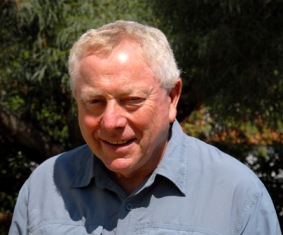
Clive Viney - co-author of Algarve Wildlife - the natural year
Papa-figos (which literally translates as fig eater) is the Portuguese name for the Golden Oriole, one of the iconic visiting birds of the Algarve. Clive Viney is the co-author of Algarve Wildlife - the natural year, and now, under the guise of Papa-Figos, chronicles his finds, thoughts and feelings while walking in the Algarve countryside throughout the natural year. Look out for his regular updates, illustrated by his fellow co-author and photographer, Ray Tipper, who has kindly provided some of the photographs that illustrate these articles by clicking through from the links below.
Castro Verde and Mad Dogs of Englishmen - Nobody sane would venture into the southern Alentejo to try and see birds in the mid July heat. Mike Chalmers and I decided to give it a go.
At 06h00 on 13th July 2017 as we departed Tavira it was already hot and breathless. As usual, our first stop was the bridge over the Ribeira do Vascão, which spans the border between the Algarve and the Alentejo. Except for the unexpected sight of a chevron of 13 Grey Herons flying north it was a slow start. A few kilometres further north is Espírito Santo, where we wound our way through the village and passed the impressive church. Unexpectedly, we found ourselves on a dead-end but surfaced road to the hamlet of Besteiros. This short detour provided good birding and should be included on any Castro Verde circuit (in future turn left before Espírito Santo). Apart from expected species we had good views of a juvenile Short-toed Eagle, a Common Raven and four Stone-curlews. Back to Espírito Santo and onto the usual unsealed road, where we stopped and on a short walk up to a ruin ticked Turtle Doves and Dartford Warblers. Southern Grey Shrikes were plentiful and the first of several male Black-eared Wheatears was added. Even just into the Alentejo the countryside was in stark contrast to the scrubby Algarve. Everywhere the grasslands had been cut and hay baled. What do they do with so much hay? These days in the region livestock rearing seems to be very much in decline and in any event the winters are not that severe. The good news was that with the grass cut we should be able to see bustards - if they could be found.
A small lake near Eirinha was delightful. Little Ringed Plovers were along the shore and a flock of Spanish Sparrows was led by a dapper male. The real treat was the dragonflies and I could have spent too long sorting them out and taking photographs. For the record, the four species identified were Long Skimmer, Black-tailed Skimmer, Red-veined Darter and Broad Scarlet. Interestingly, three of these species are widespread and common in tropical Africa and have only recently moved northwards into southern Europe. More evidence of global warming?
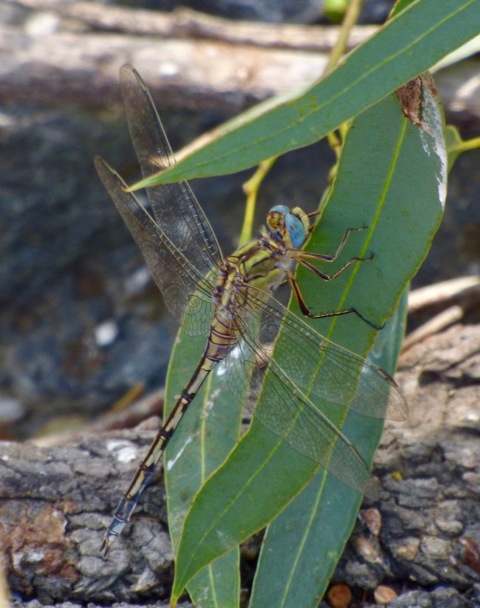
Female Long Skimmer

Female Black-tailed Skimmer
Just about the only flower in bloom was Common Ragwort and these flowers attracted pretty Small Coppers. The lack of wildflowers meant few butterflies but I was pleased to record an uncommon Spanish Brown Argus.
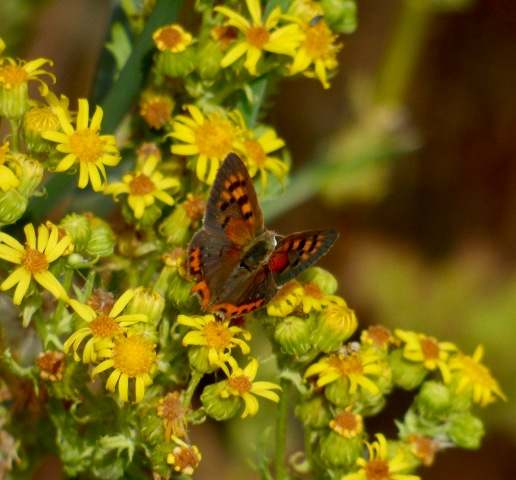
Small Copper on Common Ragwort
On the Ribeira da Oerias at Minas de Água Santa Morena we saw the first of a good number of migrant Green Sandpipers and our only Crag Martins. Always a good place to stop and wander. The water level on the shallow-banked reservoir near Alvares was down and we were disappointed not to find the Collared Pratincoles seen earlier in the year, but a huge tractor was noisily spraying the vast prairie of young olive trees. I shouldn’t complain, because I doubt that without the surrounding monoculture the reservoir would exist. There were, however, other birds to enjoy. Around the shore were plenty of Common and Green Sandpipers, Little Ringed Plovers, Black-winged Stilts and an out-of-season Northern Lapwing. The prize, though, goes to a male Black-bellied Sandgrouse that dropped in for a drink and permitted close views before flying over our heads to leave. This is a very elusive bird and flocks normally only drink at dawn and dusk. Overhead Griffon Vultures soared and they were our companions for the rest of the morning. I counted 13 at any one time but there were likely many more.
From my favoured viewpoint we scanned and scanned the vast steppes of Castro Verde for bustards but none was seen. Disappointed, we visited the woods around the hilltop chapel of Nossa Senhora d’Ara-celli and put a few passerines (songbirds) on the list. This is the site in winter from which to view the plains below for flocks of Common Cranes.
Further bustard blanks were drawn at the Welcome to Castro Verde sign on the N123 (usually reliable) and elsewhere. Just three Lesser Kestrels were seen at the favoured breeding colony and it was likely that the action was over for the year. As predicted by others, the steppes were difficult to bird in midsummer.
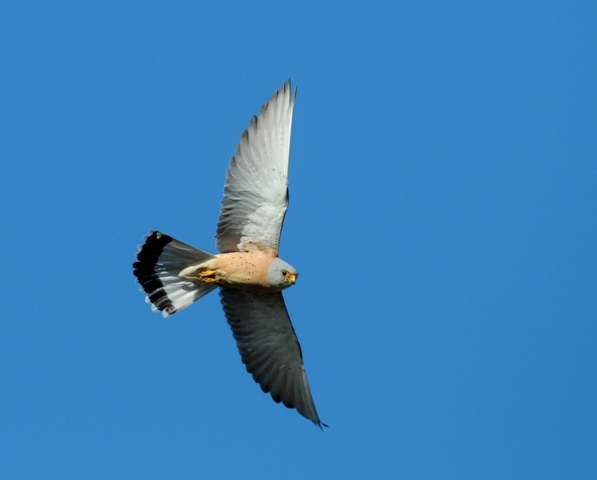
Lesser Kestrel - Picture Ray Tipper: Licence enquiry...
After the customary tosta mistas (well-buttered, toasted cheese and ham sandwiches) at Castro Verde, we made one last stop after lunch in extreme heat. At a nearby reedy reservoir it was sizzling. All of our bottles of water were hot and the shade temperature must have been in the upper forties centigrade. Basic Discoveries don’t stretch to thermometers. It was impossible to leave shade but still there were Red-crested Pochards and Gadwall swimming on the lake. Boiled duck anyone? Perseverance and at last we found Montagu’s Harriers quartering the fields but the stars were six European Rollers, an uncommon and much sought after species. Our last bird before retreating to the vehicle’s air conditioning was a Black Kite.
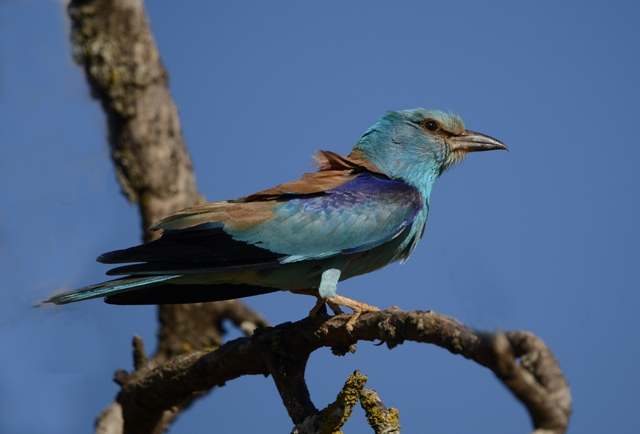
European Roller - Picture Ray Tipper: Licence enquiry...
Climbing out of Mértola in my old Discovery icebox the temperature gauge hit red. Luckily I spotted it in time and we arrived home safely at a crawl with open windows.
We logged over sixty species of birds, which considering it was midsummer was quite a handsome total. We vowed to do it again when Mike returns in late September but I’ll have to get the head gasket checked first.
Papa-figos,
Tavira
18th July 2017
Back to Papa-figos index...
Sue Parker's latest ebook is a revised and enlarged second edition of the acclaimed Wildflowers in the Algarve - an introductory guide. Full details here...
Buy it for just £3.95 on Amazon...
Sue Parker's 5-star acclaimed field guide to the Wild Orchids of the Algarve is now available as an ebook. Full details here...
Buy it for just £5.95 on Amazon...
Please Help Us: If you have found this information interesting and useful, please consider helping to keep First Nature online by making a small donation towards the web hosting and internet costs.
Any donations over and above the essential running costs will help support the conservation work of Plantlife, the Rivers Trust and charitable botanic gardens - as do author royalties and publisher proceeds from books by Pat and Sue.